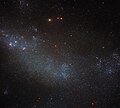File:The forest for the trees, the galaxy for the stars (potw2406a).tiff
From Wikimedia Commons, the free media repository
Jump to navigation
Jump to search

Size of this JPG preview of this TIF file: 667 × 599 pixels. Other resolutions: 267 × 240 pixels | 534 × 480 pixels | 855 × 768 pixels | 1,139 × 1,024 pixels | 2,279 × 2,048 pixels | 4,284 × 3,850 pixels.
Original file (4,284 × 3,850 pixels, file size: 94.41 MB, MIME type: image/tiff)
File information
Structured data
Captions
Captions
This image shows a densely packed field of stars, laid on top of a background of dust, gas, and light from more distant celestial objects.
Summary[edit]
| DescriptionThe forest for the trees, the galaxy for the stars (potw2406a).tiff |
English: This image shows a densely packed field of stars, laid on top of a background of dust, gas, and light from more distant celestial objects. The stars take up so much of the field of view in this image that it is a little tricky to discern that you are in fact looking at most of a galaxy, known as ESO 245-5. This galaxy is a relatively close neighbour of the Milky Way, lying at the fairly modest distance of 15 million light-years from Earth in the constellation Phoenix. Another reason that it is perhaps a little tricky to spot that ESO 245-5 is a galaxy is its apparent lack of structure. We frequently enjoy Hubble’s spectacular images of spiral galaxies, which are so interesting to look at in part because of their seemingly extraordinarily ordered arms of stars, gas and dust. ESO 245-5, in contrast, is classified as an IB(s)m type galaxy under the system of galaxy classification known as the De Vaucouleurs system. The IB(s)m designation specifically means that the galaxy is irregular (I), barred (B), has a slight spiral structure ((s)), and is of the Magellanic type (m).Irregular in this context is quite intuitive: the galaxy does not appear to have a regular, ordered structure. In fact, essentially the entire view here is covered by the stars of this galaxy. The second term means that the galaxy has a barred shape at its centre: this is the dense stretch of stars that crosses through the centre of this image. The third term says that there are hints of a spiral structure, but nothing clear or definitive (hence the ‘s’ is bracketed). Finally, the last term indicates ESO 245-5’s similarity to the Magellanic clouds, the two dwarf galaxies that are close neighbours of the Milky Way. [Image Description: An irregular galaxy: a cloud of tiny, point-like stars on a dark background. The cloud is densest along a broad, curved band across the centre of the image, coloured a faint blue with glowing purplish patches, and the stars grow more dense out to the edges but don’t fully vanish. A few distant background galaxies appear among the stars as glowing spots.] |
| Date | 5 February 2024 (upload date) |
| Source | The forest for the trees, the galaxy for the stars |
| Author | ESA/Hubble & NASA, M. Messa |
| Other versions |
|
Licensing[edit]
| ESA/Hubble images, videos and web texts are released by the ESA under the Creative Commons Attribution 4.0 International license and may on a non-exclusive basis be reproduced without fee provided they are clearly and visibly credited. Detailed conditions are below; see the ESA copyright statement for full information. For images created by NASA or on the hubblesite.org website, or for ESA/Hubble images on the esahubble.org site before 2009, use the {{PD-Hubble}} tag.
Conditions:
Notes:
|
This file is licensed under the Creative Commons Attribution 4.0 International license.
Attribution: ESA/Hubble
- You are free:
- to share – to copy, distribute and transmit the work
- to remix – to adapt the work
- Under the following conditions:
- attribution – You must give appropriate credit, provide a link to the license, and indicate if changes were made. You may do so in any reasonable manner, but not in any way that suggests the licensor endorses you or your use.
File history
Click on a date/time to view the file as it appeared at that time.
| Date/Time | Thumbnail | Dimensions | User | Comment | |
|---|---|---|---|---|---|
| current | 09:01, 5 February 2024 |  | 4,284 × 3,850 (94.41 MB) | OptimusPrimeBot (talk | contribs) | #Spacemedia - Upload of https://esahubble.org/media/archives/images/original/potw2406a.tif via Commons:Spacemedia |
You cannot overwrite this file.
File usage on Commons
The following page uses this file:
Metadata
This file contains additional information such as Exif metadata which may have been added by the digital camera, scanner, or software program used to create or digitize it. If the file has been modified from its original state, some details such as the timestamp may not fully reflect those of the original file. The timestamp is only as accurate as the clock in the camera, and it may be completely wrong.
| Width | 4,284 px |
|---|---|
| Height | 3,850 px |
| Bits per component |
|
| Compression scheme | Uncompressed |
| Pixel composition | RGB |
| Image data location | 30,074 |
| Orientation | Normal |
| Number of components | 3 |
| Number of rows per strip | 3,850 |
| Bytes per compressed strip | 98,960,400 |
| Horizontal resolution | 72 dpi |
| Vertical resolution | 72 dpi |
| Data arrangement | chunky format |
| Software used | Adobe Photoshop 25.3 (Windows) |
| File change date and time | 17:42, 19 January 2024 |
| Color space | Uncalibrated |


